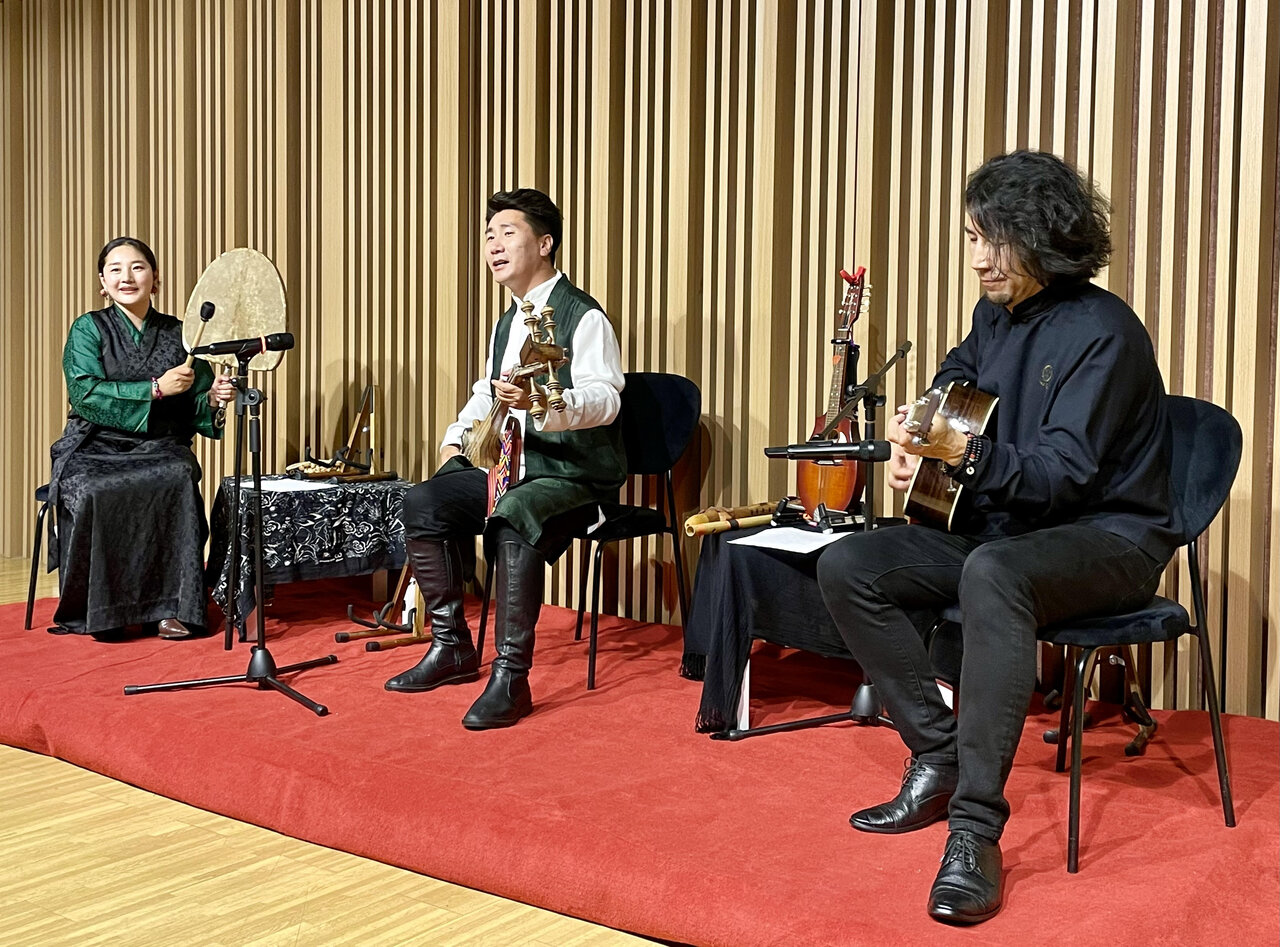World journalists impressed by ‘Sounds of Tibet’ music concert

BEIJING- Almost 100 journalists from some 90 countries around the world were audience of “Sounds of Tibet”, an impressing music concert held in the evening of June 6.
The concert was held at the place of Beijing Language and Cultural Center for Diplomatic Missions (LCC) in Sanlitun area, Chaoyang District, Beijing.
Seven pieces of music were performed by three professional musicians and singers during the concert which greatly impressed the participating journalists.
This concert was one of the many cultural activities organized by the China International Press Communication Center (CIPCC)for the international journalists during a four-month program in China.
Now, let’s a little know about the Tibetan music.
The music of Tibet reflects the cultural heritage of the trans-Himalayan region centered in Tibet, but also known wherever ethnic Tibetan groups are found in Nepal, Bhutan, India and further abroad. The religious music of Tibet reflects the profound influence of Tibetan Buddhism on the culture.
Western research into the history of Tibetan music has often focused more on religious than secular music. It has been suggested that Tibetan religious music may have been strongly influenced by West-Asian music, including that of pre-Muslim Persia (and perhaps even of Byzantium). It has also been suggested that the landscape – and in particular the resonances of caves, with their natural percussive sounding stones - exerted a formative influence on the overtone singing found in Tibetan Buddhist chant (and plausibly also in prehistoric shamanic invocations), which is produced by artful moulding of the oral cavity
The assiduous adoption and evolution of Indian Buddhist traditions and culture in Tibet between the 12th and mid-20th centuries – in a period when Buddhism had disappeared from most of the Indian subcontinent - allowed the Tibetans to perpetuate musical practices from India that would otherwise have been lost, and to develop them in distinctive ways.
Although Tibetan religious music can appear quite separate from the major traditions that emerged in Indian music, some of the musical instruments actually descend from Indian monastic and tantric Buddhist contexts.
Tibetan "street songs" were a traditional form of expression particularly popular as a means of political and other commentary in a country that was previously without newspapers or other means of mass communication. They provided political and social commentary and satire and are a good example of a bardic tradition, akin to that in medieval Europe or, more recently, the role calypsos played in the West Indies. As song lyrics in Tibet usually contained stanzas of 4 lines of 6 syllables each, the lyrics could be easily adapted to almost any melody.
Secular Tibetan music has been promoted by organizations like the Dalai Lama's Tibetan Institute of Performing Arts. This organization specialized in the lhamo, an operatic style, before branching out into other styles, including dance music like toeshey and nangma. Nangma is especially popular in the karaoke bars of the urban center of Tibet, Lhasa.
Another form of popular music is the classical gar style, which is performed at rituals and ceremonies. Lu are a type of songs that feature glottal vibrations and high pitches. There are also epic bards who sing of Tibet's national hero Gesar.
As previously mentioned, Sounds of Tibet concert was held at the place of Beijing Language and Cultural Center for Diplomatic Missions (LCC), which is an institution providing language services. LCC specializes in teaching Chinese as a second language and offering content-based cultural courses.
Over the past six decades since its inception in 1956, LCC has attracted students from over 100 countries, including former Indian president Kocheril Raman Narayanan and over 300 ambassadors.
Photo By Mahnaz Abdi
Leave a Comment